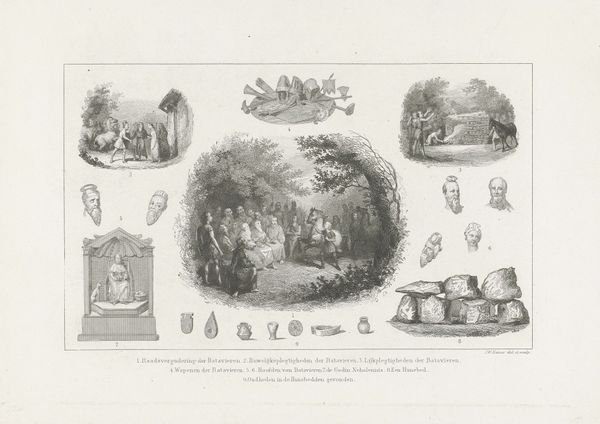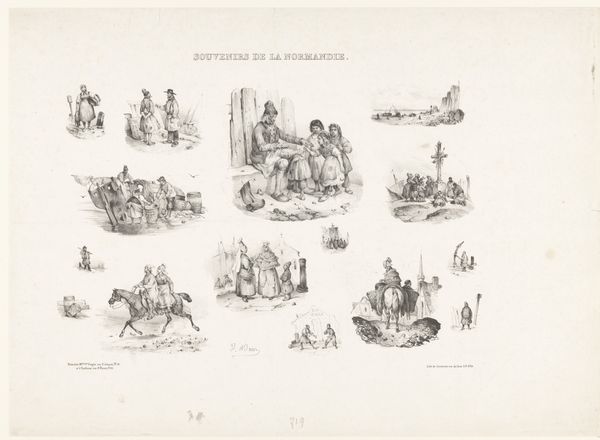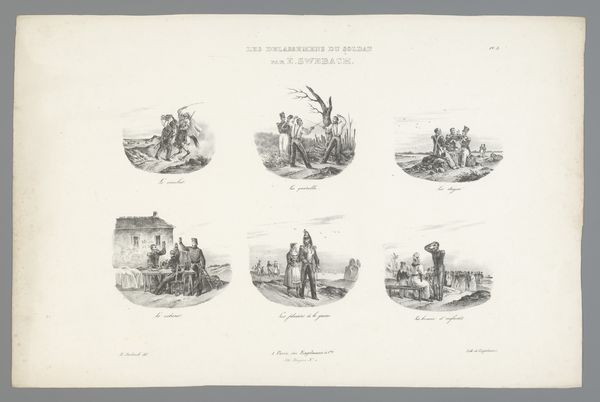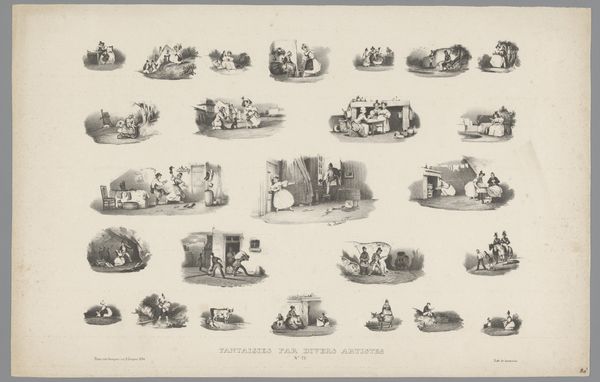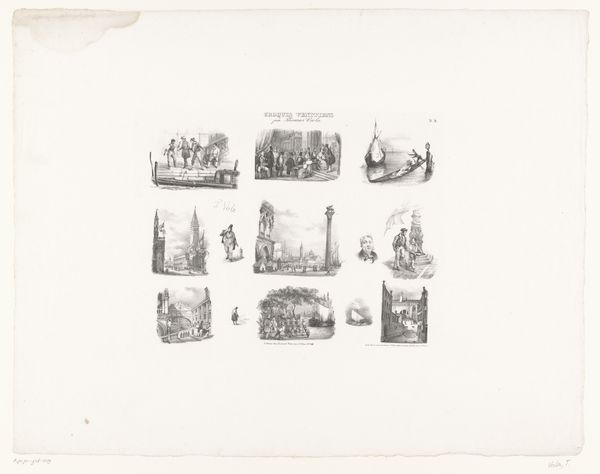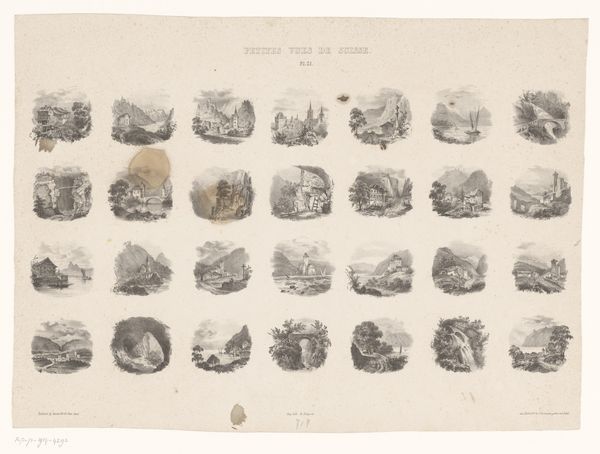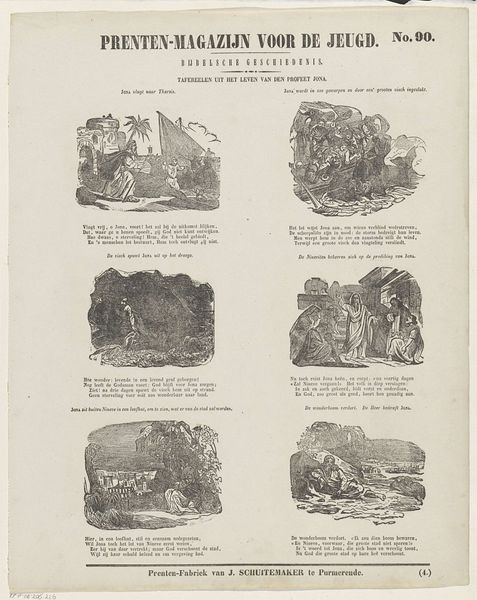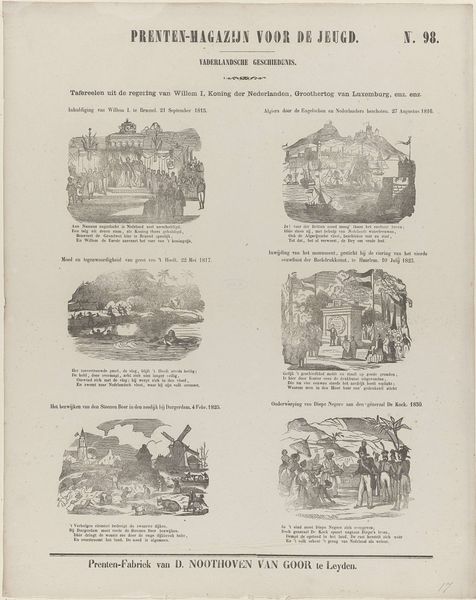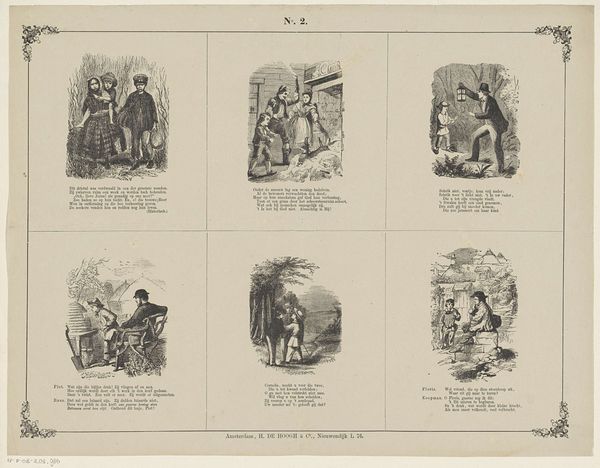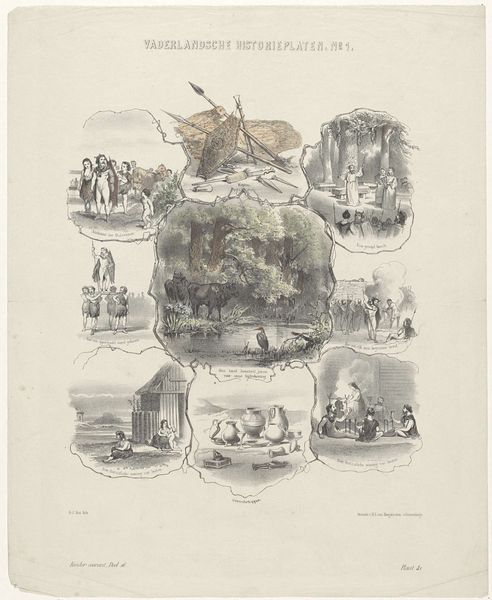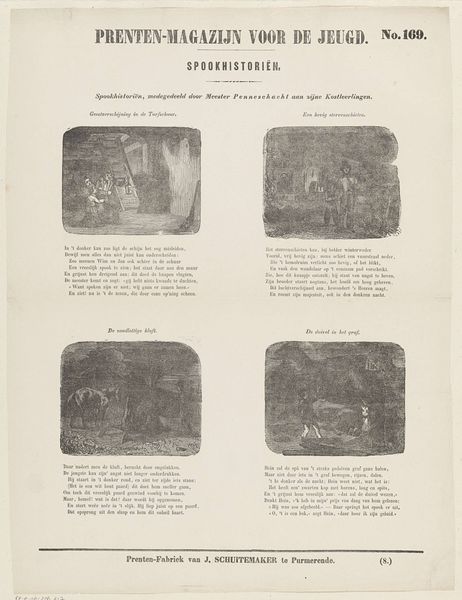
lithograph, print
#
narrative-art
#
lithograph
# print
#
dog
#
old engraving style
#
genre-painting
Dimensions: height 290 mm, width 385 mm
Copyright: Rijks Museum: Open Domain
Editor: So, this is "Twelve scenes of human activities and animals", a lithograph from 1832 by Victor Adam, currently housed in the Rijksmuseum. There's a quaint, almost miniature feel to each of these vignettes, reminiscent of old storybook illustrations, and the lithographic printing feels particularly material here. What’s your take on this piece? Curator: Given the context, I see a direct reflection of the evolving printing industry. Lithography, by its very nature, democratized image production. Consider the shift from hand-engraving – a laborious, specialized craft – to a process allowing for larger editions and wider distribution. Adam’s choice of this medium places his art firmly within a burgeoning consumer culture. These scenes, depicting everyday life, cater to a growing middle class hungry for images reflecting their own experiences. Notice the repetitive nature across all images; what implications do you think this had? Editor: It strikes me that lithography enables quicker reproductions, potentially impacting the perceived value and artistry involved. Do you see these “everyday” depictions as simply reflective, or actively shaping social views of labor and leisure? Curator: A critical point. This isn’t merely a passive reflection. By depicting idealized or romanticized scenes of daily life – the farmer, the hunter, domestic animals – Adam's lithographs arguably construct a desirable image of bourgeois existence. They subtly promote specific values connected to hard work, pastoral bliss and mastery of the landscape and domesticated animals. These images are commodities, consumed within a society increasingly defined by industrial production. The act of collecting and displaying these prints became part of defining and performing class identity. Think about the paper itself: its cost, source, and the skilled labor behind its creation are all relevant to the overall social context. Editor: So, even seemingly simple scenes reflect complex intersections of art, labor, and consumerism in the 19th century. Curator: Precisely! Examining the materiality of lithography here lets us peel back the layers and explore how art becomes entwined with the wider social and economic landscape.
Comments
No comments
Be the first to comment and join the conversation on the ultimate creative platform.
